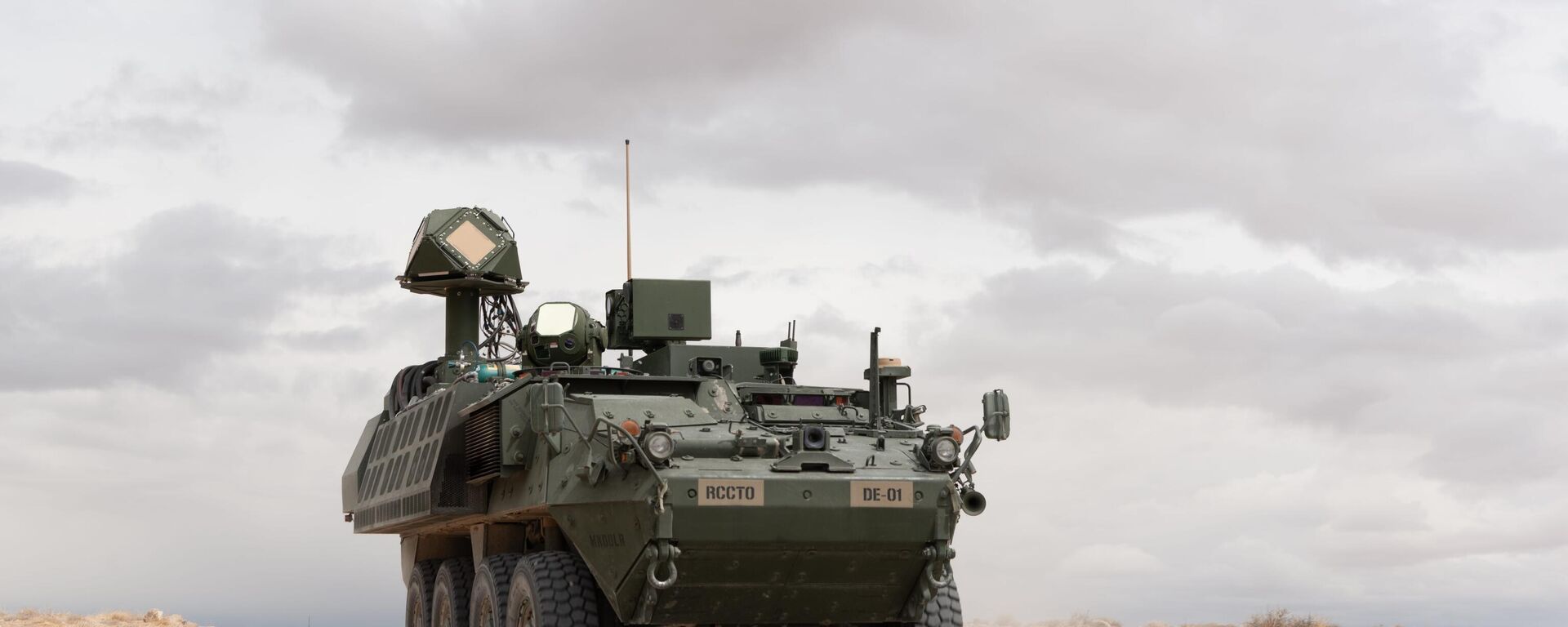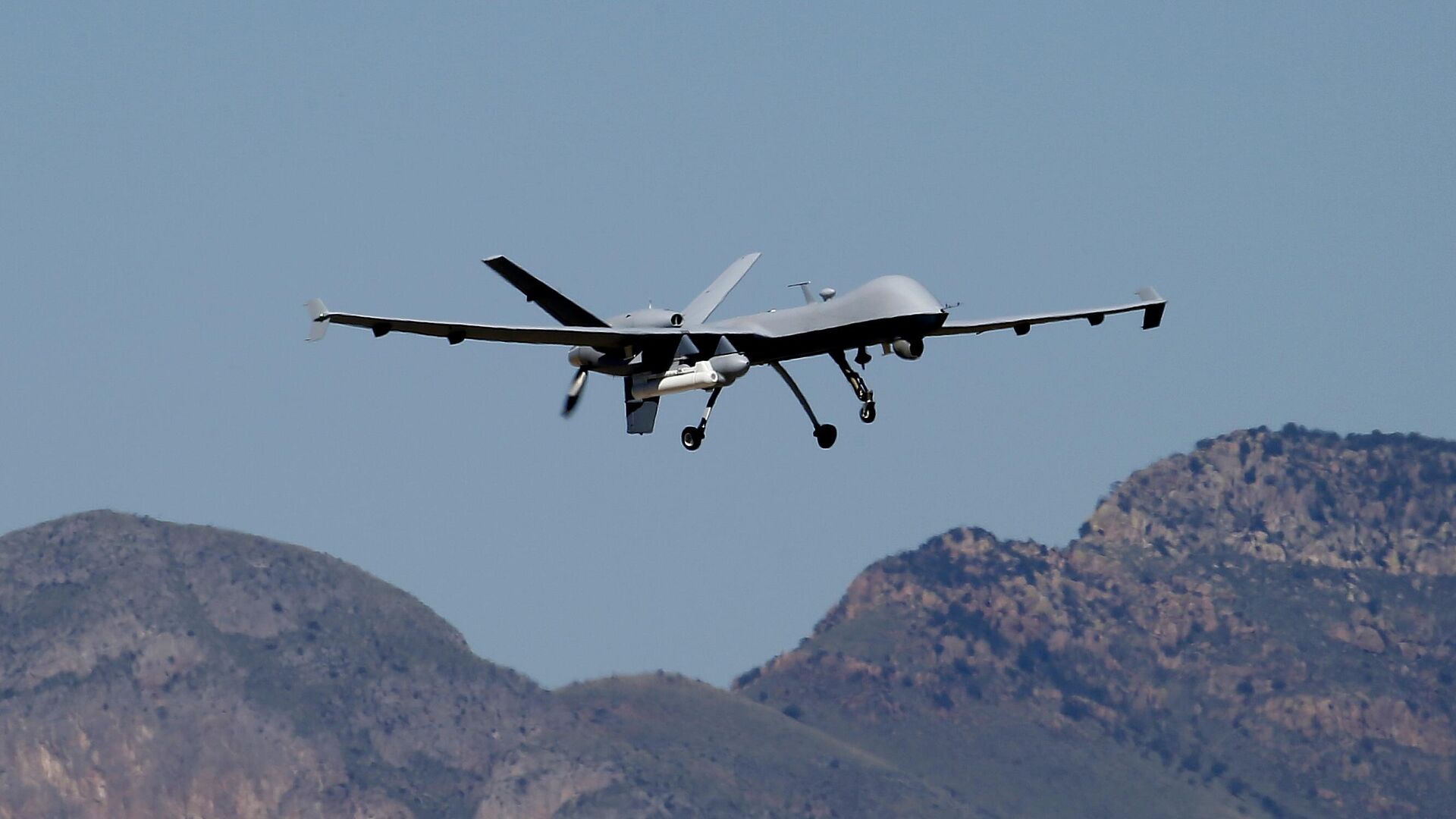https://sputnikglobe.com/20240130/us-mix-up-over-drone-identity-in-mideast-reveals-stark-lack-of-combat-experience-1116499363.html
US Mix-Up Over Drone Identity in Mideast Reveals Stark Lack of Combat Experience
US Mix-Up Over Drone Identity in Mideast Reveals Stark Lack of Combat Experience
Sputnik International
The US military recently reportedly failed to identify an enemy drone in the Middle East, taking it instead to be one of its own, as per the Wall Street Journal. Nikolay Kostikin, expert of the Military-Political Analysis Bureau, sat down with Sputnik to discuss the incident.
2024-01-30T17:42+0000
2024-01-30T17:42+0000
2024-01-30T17:42+0000
analysis
us
middle east
ukraine
russia
opinion
drones
uav
drone swarm
drone warfare
https://cdn1.img.sputnikglobe.com/img/07e8/01/18/1116363772_0:0:2668:1501_1920x0_80_0_0_b534227d8dfb0df4abe95cb3b641bace.jpg
The latest lethal drone attack on a US Mideast base left three American soldiers dead after the incoming unmanned aerial vehicle (UAV) was reportedly mistaken for an American surveillance drone.Speaking to WSJ on Monday, a senior US official claimed that the mix-up had happened due to the fact that "the enemy drone approached its target at the same time an American drone was also returning to base."IFF is an identification system that allows positive identification of friendly manned and unmanned aircraft. However, traditional methods of recognizing friend or foe and identifying targets do not always work, Kostikin noted, stressing that "the combat experience of the crew decides a lot."To illustrate his point, the expert referred to Russia's combat experience gained during the almost two-year-long Ukraine conflict.Per Kostikin, an "air defense duel is somewhat reminiscent of a game of volleyball with many balls." One can overload the system with a large number of false targets. One needs to identify air defense targets and strike them or use electronic warfare. For example, the modern Russian Kh-101 missile is capable of releasing decoys in order to mislead enemy missile defenses, he noted.In the Middle East, the incident described by WSJ could have been caused by the lack of experience of the US military, according to Kostikin. This experience is precious, therefore American and British personnel operating in the combat zone of the Russian special military operation are certainly trying to get it, the expert pointed out."However, the crux of the matter is that they either die or get captured before they can share it with their [Western] colleagues," Kostikin remarked. "Their experience cannot be compared with that of the armies of the Russian Federation or Ukraine."
https://sputnikglobe.com/20240129/air-defenses-at-us-military-base-confused-enemy-drone-for-american-drone---reports-1116472818.html
https://sputnikglobe.com/20230528/is-aukus-weaponizing-drone-swarms-against-china-1110752233.html
ukraine
russia
Sputnik International
feedback@sputniknews.com
+74956456601
MIA „Rossiya Segodnya“
2024
News
en_EN
Sputnik International
feedback@sputniknews.com
+74956456601
MIA „Rossiya Segodnya“
Russian Tor-M2 crews protect assault units from enemy drones and aircraft in the Krasny Liman direction
Sputnik International
Russian Tor-M2 crews protect assault units from enemy drones and aircraft in the Krasny Liman direction
2024-01-30T17:42+0000
true
PT0M40S
Sputnik International
feedback@sputniknews.com
+74956456601
MIA „Rossiya Segodnya“
us mideast base, drone attack on us mideast base, drone attack on us base on jordanian border, us military confused enemy drone for an american one, three killed and 34 injured in drone attack on us base, russia's experience in combating enemy drones
us mideast base, drone attack on us mideast base, drone attack on us base on jordanian border, us military confused enemy drone for an american one, three killed and 34 injured in drone attack on us base, russia's experience in combating enemy drones
US Mix-Up Over Drone Identity in Mideast Reveals Stark Lack of Combat Experience
The US military recently reportedly failed to identify an enemy drone in the Middle East, taking it instead to be one of its own, as per the Wall Street Journal. Nikolay Kostikin, expert of the Military-Political Analysis Bureau, sat down with Sputnik to discuss the incident.
The latest
lethal drone attack on a US Mideast base left three American soldiers dead after the incoming unmanned aerial vehicle (UAV)
was reportedly mistaken for an American surveillance drone.
Speaking to WSJ on Monday, a senior US official claimed that the mix-up had happened due to the fact that "the enemy drone approached its target at the same time an American drone was also returning to base."
"This may well be the case," Nikolay Kostikin, expert of the Military-Political Analysis Bureau, told Sputnik. "One needs to understand that what the operator sees on the monitor is not the image from the video camera, but targets comparable in size. In addition, he has a statement of goals. Indeed, he might have thought it was his drone. Of course, we are assuming that was the case. Ideally, each object is included in the identification friend or foe (IFF) system. Why it didn't work in this case is an open question."

29 January 2024, 16:35 GMT
IFF is an identification system that allows positive identification of friendly manned and unmanned aircraft. However, traditional methods of recognizing friend or foe and identifying targets do not always work, Kostikin noted, stressing that "the combat experience of the crew decides a lot."
To illustrate his point, the expert referred to Russia's combat experience gained during the almost two-year-long Ukraine conflict.
"[Ukrainian] drones are coming to [Russia] in droves. And, as one can see, they rarely reach military facilities. So far, the Ukrainians and their British curators can only boast of 'success' in killing civilians in public places," he said.
Per Kostikin, an "air defense duel is somewhat reminiscent of a game of volleyball with many balls." One can overload the system with a large number of false targets. One needs to identify air defense targets and strike them or use electronic warfare. For example, the modern Russian Kh-101 missile is capable of releasing decoys in order to mislead enemy missile defenses, he noted.
"Drones attack in swarms, usually giving the opportunity to hit the target with something more substantial," the expert continued. "Their task is mainly to overload the enemy's system, the attention of operators and exhaust the enemy firing capability by the very fact of their presence. A typical example of the Russian Army's success was the destruction of the [US-made] Patriot [air defense] system in Kiev. The [Patriot] crew was distracted by false targets, forced to use up its ammunition, and then was destroyed by a single hypersonic missile."
In the Middle East, the incident described by WSJ could have been caused by the lack of experience of the US military, according to Kostikin. This experience is precious, therefore American and British personnel operating in the combat zone of the Russian special military operation are certainly trying to get it, the expert pointed out.
"However, the crux of the matter is that they either die or get captured before they can share it with their [Western] colleagues," Kostikin remarked. "Their experience cannot be compared with that of the armies of the Russian Federation or Ukraine."




